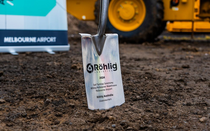Dear Valued Customer,
Welcome to the Röhlig ANZ Monthly Market Update. We will continue to be in contact with you, letting you know what is happening in the world of freight forwarding and logistics. If you have any questions and would like to address them, please send them to rohlig.australia@rohlig.com. We appreciate your suggestions and feedback.
Please click the drop-down sections below to read the update for AIR, SEA and TRANSPORT.
Global
In the first seven months of 2024, Global air cargo demand grew 12% year-on-year. This has been driven by high demand in e-commerce out of Asia, along with the ongoing ocean freight disruptions. Demand exVietnam is expected to increase throughout September, as their e-commerce booms. Noticeably, e-commerce demand is filling planes exChina, and has now had an impact on freighter capability into Australia. In particular, Qatar Airways discontinued their freighter aircrafts into Melbourne last week.
Read more: Qatar Cargo to refocus freighter network strategy to drive profitability
We expect September onwards to become challenging with space, especially via Asia. Singapore Airlines has been tight on space into the East Coast of Australia over the past 2 weeks.
The Northern Hemisphere winter schedules will start in October. Globally, indications show costs will be on the rise as fleet capacity struggles to satiate e-commerce demand from China in the lead up to ‘Black Friday’ and ‘Christmas’ sales.
Read more: Forwarders and shippers push for longer term air cargo deals
However, oil demand globally is lower with barrel prices 73 USD at time of writing. If these levels hold, we should see some relief on fuel surcharges in the coming weeks. (See the charts: https://www.tradingview.com/chart/?symbol=TVC%3AUSOIL and https://www.iata.org/en/publications/economics/fuel-monitor/ ).
For more information about our Air Freight services, please click Rohlig Air Freight, call your local account manager or our friendly Team.
Oceania
Rail delays between Tauranga and Auckland have caused some disruption to container receivals by increasing lead times to minimum of 9 days from discharge. For urgent containers please let us know in advance, before arrival into Port of Tauranga. Empty depots in New Zealand are for the most part ok, with no issues to note. Otherwise, the Trans-Tasman rates are still quite stable and obtaining space is fine.
Asia
Whilst we may be hearing of sky-high rates ex. Asia to Europe and US starting to come down, that is not being felt in our region ex. Asia to Oceania, yet. Our local markets tend to be a couple of months behind these major trade lanes so it will be interesting to see if our region will follow suit. However, for now, the GRIs keep coming. 1st September GRIs ex. Asia were passed through successfully to the FAK rates, increasing them every two weeks for the last few months.
Further GRIs are starting to be announced by the shipping lines for 15th September implementation of between USD300-500/TEU ex. NEA to AU & NZ and USD300/TEU ex. SEA to AU. Certainly, carriers are citing that vessels are still overcapacity and that we need to be placing bookings well in advance, as soon as vessels open.
SPOT space can still be obtained but rates are considerably higher with less free time offering. A few carriers will put on sweeper vessels to clear backlog at the most affected Asian ports in early September.
MSC’s service suspensions are now in effect and the new Wallaby revamped service is underway so it will be knows in the next few weeks what influence the downsized capacity on Oceania loops will have on our market.
Bad weather causes chaos at Indian ports, and cargo backlogs build
“Container flows out of India’s west coast ports are under severe pressure, as terminals battle cargo bottlenecks from extreme weather on top of lingering capacity pressure linked to a build-up of volumes.
Container lines have reported significant vessel delays at Mundra Port, which bears the brunt of the country’s containerised trade, after torrential rain and flooding swept through the coast last week.”
Read more: Bad weather causes chaos at Indian ports, and cargo backlogs build - The Loadstar
Please download PDF file below to see more charts.
It is no surprise that a global container traffic is hitting a strong peak. Largely due to a double-digit yoy increase in Intra Asia Trade.
The average vessel size in the global container fleet currently stands at 4,809 teu, up 3.5% y-o-y.
- The scale of the vessel technically improves the operating cost. And we have seen the average vessel size increase by 3.5% from a year ago.
- Current cellular fleet of 30.2 MTEU counts 6,278 vessels which mean average vessel size 4,809 TEUs. This is compared to 2023 figure of an average of 4,645 TEUs.
- ZIM, MSC and CMA, Hapag are observed to be growing their average ship size faster than market average.
Ocean carriers 'fire blanks' ahead of China’s Golden Week holiday
“Fearing another container spot rate crash, ocean carriers have blanked a number of export sailings from Asia to Europe and Asia to the US, prior to the Chinese national holiday in early October.
A carrier contact told The Loadstar this week he expected to see “many more” void sailings this year in the key soft-demand weeks of the slack season.
“We are determined not to get sucked into another rates war this year, and as long as the Red Sea diversions continue we think we will be ok,” said the contact.
Drewry’s latest blanked sailings assessment puts the notified cancellation rate in September for scheduled sailings on the transpacific, Asia-Europe and the transatlantic at 10% to date.
“Over the next five weeks, THE Alliance have announced 17 cancellations, followed by the Ocean and 2M alliances with 12 and 10 respectively,” said the consultant.
Drewry said 51% of the blanked sailings notified to date were on the transpacific, 28% on Asia-Europe and 21% on the transatlantic.”
Read more: Ocean carriers 'fire blanks' ahead of China’s Golden Week holiday - The Loadstar
Europe
The August holidays in Europe have seen a lull in bookings and activity with factories closed or implementing skeleton staff during their summer break.
Main region impacted was the Mediterranean with a drop of volumes by 30% compared to July volumes. This slowdown has been compensated by North European countries who have shipped consistently over the summer period with the threat of further capacity shortage in September.
Direct carriers are still avoiding Singapore and Port Kelang transshipment hubs by offering direct sailings only, in an attempt to alleviate the huge backlog at these Asian ports.
It is yet to see whether or not we will see the traditional peak season on the trade happening from October to December. The capacity crunch on the relay services will keep adding pressure on the Direct options – hence artificially create a potential peak season.
On the positive side, we welcome the news that CMA will resume their relay service to New Zealand for October sailings.
Threat of more strikes at German ports as workers reject 'inadequate' offer
“German trade union ver.di has rejected the Central Association of German Seaport Operators’ (ZDS) collective agreement offer, sparking strike fears.
In the fourth round of negotiations for a new collective agreement for the 11,500 employees of the German North Sea ports last month, ZDS submitted an offer that contained two variants with different durations.
However, a ver.di member survey last week resulted in both variants being rejected as insufficient, and employees voting for renegotiation.”
Read more: Threat of more strikes at German ports as workers reject 'inadequate' offer - The Loadstar
Americas
The ongoing threat of port strikes both in Canada and the USEC leans to an unsettled market as everyone waits to hear the outcome of those negotiations. The negative impact of a port strike is all too familiar and will have a major impact on logistics, be it rail, trucking and sea freight.
East coast port strike threat grows – and Canadian rail dispute still lingers
“There will be no rest for North American shippers as one strike ends, because another threatens to “increase delays and drive up costs”.
On Friday, east coast port employers the United States Maritime Alliance (USMX) said that, along with the International Longshoremen’s Association (ILA), it had filed a ‘notice to mediation agencies’ with the Federal Mediation & Conciliation Service (FMCS).
This is to inform the FMCS of a dispute between the parties and does not represent an agreement for mediation.
Indeed, the USMX “has still been unable to secure a meeting with the ILA to resume negotiations on a new master contract”.
Read more: East coast port strike threat grows – and Canadian rail dispute still lingers - The Loadstar
2024/25 Seasonal measures for Brown Marmorated Stink Bug (BMSB)
BMSB seasonal measures will apply to targeted goods manufactured in or shipped from target risk countries, that have been shipped between 1 September and 30 April (inclusive), and to vessels that berth, load, or tranship from target risk countries within the same period.
Note: The shipped-on board date, as indicated on the Ocean Bill of Lading, is the date used to determine when goods have been shipped. “Gate-in” dates and times will not be accepted.
What's new?
-
Addition of China and Republic of Korea to the heightened vessel surveillance list. (Shipments from these countries do not require treatment)
-
Introduction of the AusTreat scheme for offshore treatment providers
-
Removal of the Vessel Seasonal Pest Scheme
To find more information please refer to our Röhlig BMSB flyer and/or visit the Department’s BMSB website.
Customers importing significant FCL volumes may wish to consider the Safeguarding Arrangements Scheme, applications are now open.
If you have any questions, please do not hesitate to contact your Rohlig Customs Broker Representative or Account Manager.
Thank you for your ongoing support of Röhlig Australia and New Zealand. We will continue to keep you updated, however should you have any questions relating please do not hesitate to contact your Röhlig Account Manager or Customer Service Representative.
DISCLAIMER - All information is provided in good faith for guidance and reference purposes only. It is of a general informational nature, and Röhlig Logistics GmbH & Co. KG takes no legal responsibility for the accuracy of the information provided via this document. Röhlig Logistics GmbH & Co. KG makes no representation as to the accuracy or completeness of any of the information contained herein and accepts no liability for any loss arising from the use of the information provided.







